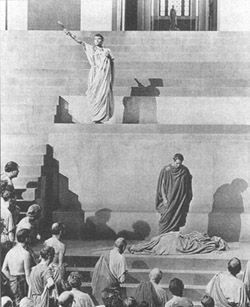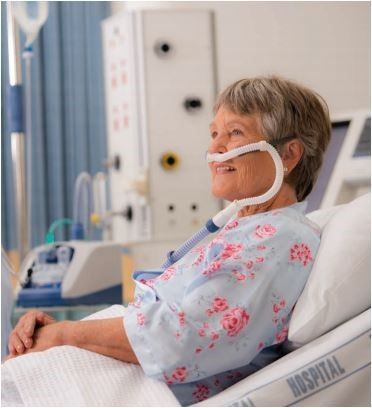ROME – ANOTHER BUREAUCRATIC WORRY
ROME – ANOTHER BUREAUCRATIC NEFANDNESS
A little girl, very sweet, is two years old and can'tò walk.
THE REASON FOR THE DENIAL IS FOUND IN THE QUICLES OF THE’APPLICATION OF CURRENT PROVISIONS REGARDING STAMP EXEMPTION.
The tax benefit, which applies both to vehicles driven by the disabled and to those used to accompany the disabled themselves, is due to the handicapped/invalid holder of the vehicle or to the person in charge of the vehicle if the handicapped/invalid è fiscally at your expense.
The exemption è granted for a single vehicle and the license plate of this must be indicated when submitting the application.
Requests for exemption must be presented, in the FIRST INSTANCE, at the ACI Provincial Offices or at the ACI Delegations., in SECOND INSTANCE (reexamination of the request) at the Lazio Region – Dir. Reg. Budget and Taxes – Tax Area and, in THIRD INSTANCE (in case of further refusal), to the Tax Commission.
THERE ARE FOUR TYPES OF DISABILITY’:
1) DISABLEÀ WITH DISEASE THAT INVOLVES REDUCED OR IMPEDED CAPACITÀ PERMANENT MOTORS.
The disabled person must have been recognized as a handicapped person or a disabled person suffering from a pathology that involves reduced or impeded abilitiesà motor.
The vehicle, always within the foreseen engine capacity limits, must necessarily be equipped with a technical adaptation resulting from the registration certificate.
The adaptations can concern both the modifications to the driving controls, and only the bodywork or the internal arrangement of the vehicle, to enable the disabled person to access them. By way of example, the technical adaptation to the bodywork canò consist of a lifting platform, retractable slide, lifting arm, hoist (mechanical/electric/hydraulic), sliding-rotating seat simultaneously designed to facilitate the installation of the disabled person in the passenger compartment, anchoring system for wheelchairs with attached restraint system for the disabled (seat belts), sliding door. Even in the case of the other type of adaptation, exemption è granted PUCHé There is always a functional connection between the handicap and the adaptation itself.
The documentation to be attached to the exemption application è consisting of:
• Copy of the registration certificate from which the adaptations necessary for transport or (for driving license holders) are the driving devices applied to the vehicle, integrated (for vehicles equipped with automatic transmission only) from the prescription of the local medical commission, pursuant to the & #8217; Art.119 of the Highway Code;
• Copy of the special driving license (not è Request for vehicles adapted only in the bodywork, to be used for the accompaniment and locomotion of the disabled);
• Copy of the certificates, issued by public medical commissions, which recognize:
a) the state of handicap or disabledà,
b) suffering from a pathology which involves reduced or impeded abilitiesà motor.
• Copy of the documentation or declaration in lieu of certification certifying that the disabled person è fiscally charged to the owner of the vehicle (only if the vehicle is not registered to the disabled/invalid person).
2) DISABLEÀ WITH DISEASE WHICH INVOLVES SERIOUS CAPACITY LIMITATIONÀ OF WALKING OR SUFFERING FROM MULTIPLE AMPUTATIONS
The disabled person must have been recognized as a handicapped or invalid, in a state of gravityà, suffer from a condition that causes severe limitation of capacityà ambulatory or suffering from multiple amputations.
The vehicle, always within the foreseen engine capacity limits, does not require technical adaptation.
Documentation to be attached to the exemption application è made up of:
• Copy of the registration certificate;
• Copy of the assessment report of the handicap issued by the Medical Commission at the ASL referred to in the art. 4 of the law n.104/1992 which explicitly shows that the subject is in a situation of serious handicap pursuant to art. 3 paragraph 3 of the same law deriving from pathologies that involve a serious limitation of walking or from multiple amputations;
• Copy of the documentation or declaration in lieu of certification certifying that the disabled person è fiscally charged to the owner of the vehicle (only if the vehicle is not registered to the disabled/invalid person).
3) DISABLEÀ MENTAL OR PSYCHIC
The disabled person must have been recognized as a handicapped or invalid, in a state of gravityà, affected by a mental or psychic pathology, with recognition of the indemnityà Accompanying.
The vehicle, always within the foreseen engine capacity limits, does not require technical adaptation.
Documentation to be attached to the exemption application è made up of:
• Copy of the registration certificate;
• Copy of the handicap assessment report issued by the Medical Commission at the ASL pursuant to art. 4 of the law n. 104/1992 which explicitly shows that the subject is in a situation of serious handicap pursuant to art’art.3 paragraph 3 of the same law deriving from disabilityà psychic or mental
• Copy of the indemnity award certificateà accompaniment pursuant to laws 18/80 and 508/88 issued by the Commission responsible for ascertaining the invalidityà civil pursuant to law n.295/90 or substitute declaration of certification certifying that the disabled person è the indemnity has been recognizedà Accompanying
• Copy of the documentation or declaration in lieu of certification certifying that the disabled person è tax for the vehicle holder (only in the event that the vehicle is not registered to the handicap/invalid carrier).
4) DisabilityÀ For CecitÀ Or deordomutism
The blind (Cecità absolute or visually impaired with a visual residue not exceeding 1/10 in both eyes) and deaf -mutes, affected by Sordità from birth or before of the spoken language learning.
The vehicle, always within the limits of displacement, does not require technical adaptation.
The documentation to be attached to the exemption application è consisting of:
• Copy of the registration certificate;
• Copy of the certificates, issued by public medical commissions, which recognize:
a) the state of handicap or disabledà,
b) the affection from Cecità o deordomutism;
• Copy of the documentation or substitute declaration of certification certifying that the disabled person è tax for the vehicle holder (only in the event that the vehicle is not registered to the handicap/invalid carrier).
By law n. 104/1992 Art. 3.
Subjects entitled
THE. É Handicapped person who presents a physical, psychic or sensorial, stabilized or progressive minor, which é cause of difficultyà learning, relationship or working integration and such as to determine a process of social disadvantage or marginalization.
II. The handicapped person has the right to the services established in his favor in relation to the nature and consistency of the minor, the capacityà residual individual overall and the effectiveness of rehabilitation therapies.
III. If the minor, single or multiple, has reduced personal autonomy, related toà, In order to make a permanent, continuous and global care intervention necessary in the individual or in relationship sphere, the situation assumes gravit connotationà. Gravit's recognized situationsà determine priorità in the programs and interventions of public services.
IV. This law also applies to foreigners and stateless ones, residents, domiciled or having stable home in the national territory. The related services are paid within the limits and conditions provided for by current legislation or international agreements.


